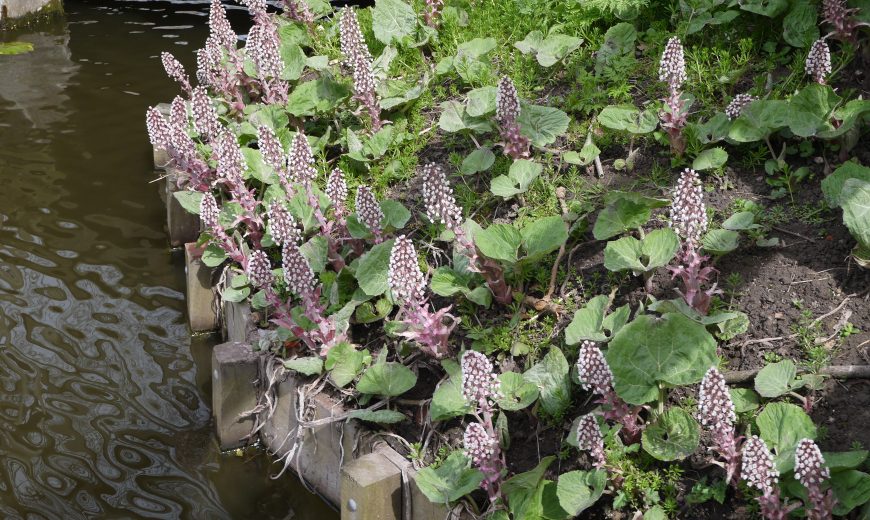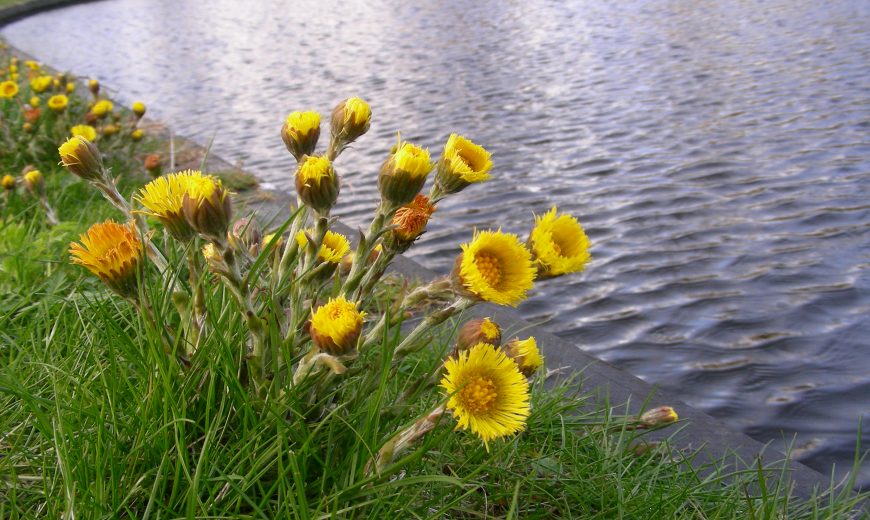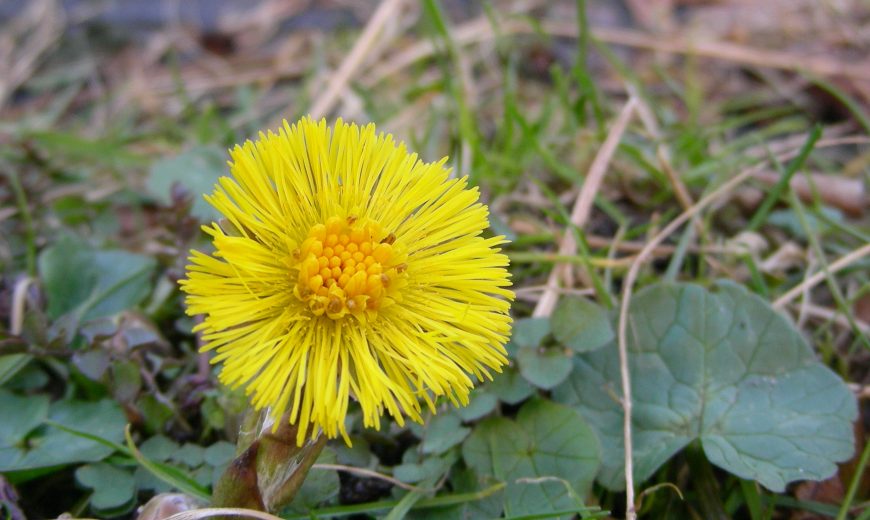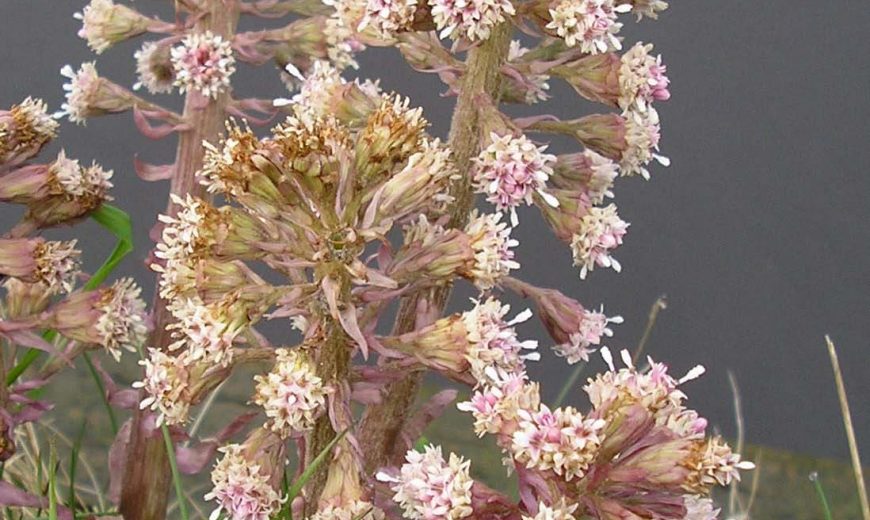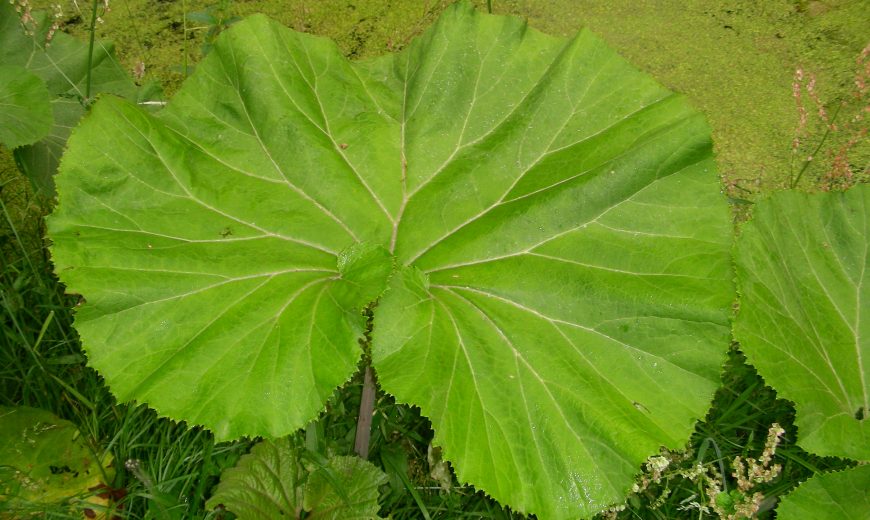Many people think that the dandelion is a very early flowerer. But the very first to herald the coming of spring is the small yellow bud of the coltsfoot. Almost simultaneously the equally precocious flower of its big brother, the butterbur, appears. With a bit of imagination you can see the shape of a horse’s hoof in the leaf. Did you know though that horses prevented the loss of many human lives when disaster struck? You can find out how this happened in the following hero epic . Draw nearer and listen to my tale:
In darker times long long ago there lived a strong courageous chief. He was a wise and just leader who cared well for both his people and his land. The chief was inseparable from his special stallion. This horse was large and strong with strikingly broad hooves and a rough reddish coat. The chief enjoyed galloping on his large horse together with his daughter who rode a young mare with an eye-catching yellow mane.
“I had such a strange dream last night,” said the father to his daughter one beautiful morning. “In my dream this angel appeared and told me that today there will be a tidal wave that will destroy the villages on the riverbanks. The angel told me that you and I must go and warn all the villagers as quickly as possible and that we must get the children, the sick and the elderly out of harm’s way. But just look at the sky, it’s a clear blue and there’s not a breath of wind! What a strange dream. I really don’t know what to make of all of this…” His daughter said nothing for a time, then looked her father straight in the eye and responded, “We must hurry, father. There’s no time to lose. This is an important message!”
In the first village the people simply laughed at them, pointing up at the blue sky with not a cloud in sight. But on the orders of their leader they took their cattle and headed for the hills. On their way to the furtherst village the chief and his daughter saw an ominously dark bank of clouds gathering on the horizon. At the same time there was an almost unnatural stillness with not a leaf moving or a bird singing filling them with a sense of doom and foreboding. A short while later the wind whipped their faces and the rain lashed cruelly down,as they rode back and forth tirelessly from the river to the safety of the hills. Sometimes they carried three or four children and old people on their horses, while other villagers fled on foot up to higher grounds.
Suddenly they saw a huge tidal wave rise up out of the river and crash down on the village, flooding everything in its path. Caught in the turbulent waters the chief and his daughter grabbed onto a treetrunk and eventually reached dry land on the slopes of a hill. Tragically, their horses drowned in the savage waves.
Father and daughter were devestated at the loss of their inseparable companions, the horses. At the same time they felt proud that together with the help of these brave animals they had been able to save so many lives.
The following spring small yellow flowers sprung up in the bare sodden earth on the banks of the river that had flooded. First small yellow flowers with no leaves appeared followed quite suddenly by large bushy grey and lilac flowers, again with no leaves. That night the angel reappeared in the chief’s dreams. She told him, “Your horses gave their lives to save those of many villagers. People will never forget their heroic deeds and death. If you go down now to the riverbanks where the horses galloped along, you will see special flowers growing there, the first heralds of spring. These flowers have been created in their honour.”
The walks of the father and daughter often took them past the small yellow flowers with the colour of the young mare’s mane and the large bushy flowers with the reddish colouring of the large stallion. Very soon they discovered that when the flowers had faded, leaves appeared: the plant with the grey and lilac flowers had large leaves; the plant with the yellow flowers had smaller ones. Both in the familiar shape of their trusty steeds’ hooves.
Butterbur and coltsfoot are referred to as precocious because their leaves appear after flowering. The flowers grow on ‘naked’ stems before the leaves open up. The blackthorn and autumn crocus are other well-known precocious plants. Both have long rootstocks with shoots of up to a metre long. Coltsfoot is a pioneer plant which prefers to grow on either bare or open damp ground. It is also ‘monoecious’. This means that the flower is both male and female. In contrast, butterbur is ‘dioecious’. That means the male flower, a bare reddish flower, looks completely different to the female flower with its decorative spikes. The leaves appear at the end of the flowering period and ressemble large rhubarb leaves and can have thick stems of up to a metre long.
© Els Baars, Natuurverhalen.nl

